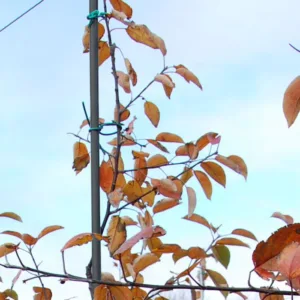When it comes to supporting young or vulnerable trees, the choice of stake material is crucial. Both fiberglass and wood stakes have their proponents and detractors, and the best choice often depends on specific circumstances, including environmental conditions, budget, and sustainability concerns. This article delves into the pros and cons of each material, offering a comprehensive comparison to guide gardeners, landscapers, and anyone interested in tree care.

fiberglass tree stakes
Fiberglass Tree Stakes
Advantages
Durability: Fiberglass stakes are renowned for their strength and longevity. They can withstand harsh weather conditions, from scorching sun to freezing temperatures, without breaking down.
Weather Resistance: Unlike wood, fiberglass doesn’t rot, rust, or suffer from pest infestations. This resistance makes it an ideal choice for humid or rainy climates.
Ease of Installation: Lightweight and sturdy, fiberglass stakes are easy to handle and install, requiring minimal effort to secure them in place.
Disadvantages
Cost: One of the primary drawbacks of fiberglass stakes is their initial cost, which is higher than that of wood stakes.
Environmental Impact: Fiberglass production and disposal raise concerns about environmental sustainability and recyclability.
Wood Tree Stakes
Advantages
Cost-Effectiveness: Wood stakes are less expensive upfront, making them an attractive option for large-scale projects or those on a tight budget.
Environmental Friendliness: Being a natural material, wood is biodegradable and has a smaller environmental footprint, assuming it is sourced from sustainably managed forests.
Disadvantages
Durability Issues: Wood can rot, split, or be affected by pests, reducing its lifespan compared to fiberglass.
Maintenance Requirements: Wood stakes may require more frequent checks and replacement, increasing long-term care efforts.
Comparative Analysis
Lifespan and Sustainability: While fiberglass offers a longer lifespan, wood stakes are seen as more sustainable due to their biodegradability.
Cost Analysis: The initial investment in fiberglass may be higher, but reduced maintenance and replacement needs can make it more cost-effective over time.
Environmental Considerations: The decision between fiberglass and wood also involves weighing the environmental impacts of production, use, and disposal.
Practical Applications
When to Use Fiberglass Stakes: Ideal for harsh climates and long-term support needs, where durability and minimal maintenance are priorities.
When to Use Wood Stakes: Best suited for temporary support, environmentally sensitive areas, or projects where initial cost is a critical factor.
Expert Opinions
Interviews with horticulturists and arborists highlight the importance of considering the specific needs of the tree and the local environment when choosing stake materials.
Case Studies
Real-life examples illustrate how the choice between fiberglass and wood stakes has impacted tree health and stake longevity in various settings.
Conclusion
In conclusion, both fiberglass and wood tree stakes offer unique advantages and challenges. The choice between them should be based on a careful consideration of durability, cost, environmental impact, and the specific needs of the project. By weighing these factors, one can make an informed decision that ensures the health and stability of their trees.
FAQs
- Which type of tree stake lasts longer?
- Fiberglass stakes generally last longer than wood stakes due to their resistance to weather, pests, and rot.
- Are wood stakes environmentally friendly?
- Yes, wood stakes are considered environmentally friendly because they are biodegradable and sourced from renewable resources, especially when obtained from sustainably managed forests.
- Can the cost of fiberglass stakes be justified?
- While the initial cost of fiberglass stakes is higher, their durability and low maintenance needs can make them more cost-effective over time, especially in harsh environmental conditions.
- How do I choose between fiberglass and wood stakes?
- The choice should be based on factors such as the environmental conditions, the specific needs of the tree, budget constraints, and sustainability considerations.
- Are there any alternatives to fiberglass and wood stakes?
- Yes, there are alternatives like metal or plastic stakes, each with its own set of advantages and disadvantages. However, environmental impact and sustainability should be considered when choosing these options.
 info@unicomposite.com
info@unicomposite.com


























